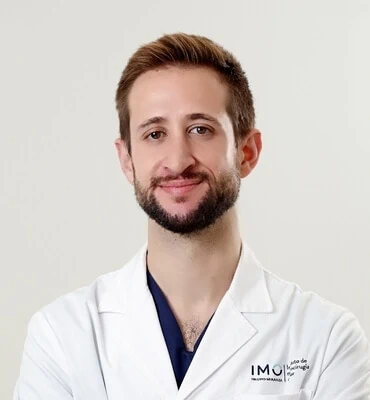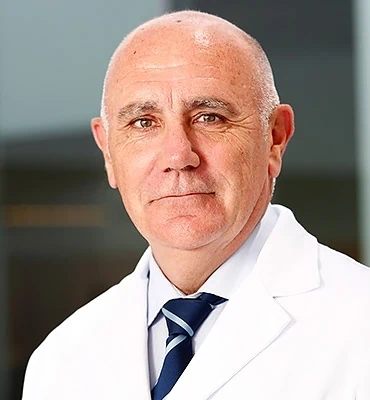What is strabismus?
Strabismus is an eyesight problem that consists of the loss of parallelism between the two eyes insofar as they are not properly aligned and each one points in a different direction. Despite being a pathology that is often associated to childhood, it is also present and can be treated in adults.
What causes it?
Adult strabismus can arise as a result of childhood strabismus or be secondary to different diseases and processes. Depending on its many different causes, there are four main groups of strabismus, each one of which must be treated specifically:
- Paralytic: The muscles responsible of moving and focusing the eye are much weaker, generally due to ischemias, tumours or neurological pathologies.
- Restrictive: this is due to a mechanical problem arising from prior eye surgeries and orbital fractures or trauma, as well as secondary to thyroid diseases or high myopia.
- Essential: this often comes from childhood, although it might be just the opposite and be a result of ageing due to laxity of the tissues involved in eye movements.
- Sensorial: associated to bad eyesight, as it arises when one of the two eyes cannot see or has very limited vision.
How is it diagnosed?
To assess the degree of ocular deviation and the type of strabismus in order to ascertain subsequent treatment, a complete ophthalmological examination is performed that may sometimes require specific tests to assess the disease.
Furthermore, the presence of other eye diseases or refractive disorders associated to strabismus is ruled out during the visit.
Symptoms
In cases where strabismus appears in adulthood, the patient often experiences intermittent or constant double vision (diplopia), which may become extremely incapacitating when performing everyday activities.
Furthermore, childhood strabismus does not cause diplopia, although patients suffering from it often experience:
- Visual fatigue
- Problems relating with other people or of self-esteem
It is important to consider the psychosocial implications of ocular deviation, the correction of which not only treats a functional problem but also offers aesthetical benefits.
Associated treatments
Specialists who treat this pathology
FAQs
The amblyopic eye has not developed vision correctly, but all eye structures are in good condition. Vision develops from birth, and the eye becomes increasingly more capable of perceiving objects, which is called visual acuity. The amblyopic eye does not develop visual acuity for various reasons. The eye is anatomically correct, i.e. its structures are normal, but vision has not developed.
Ocular occlusion is used to make the diseased eye work harder by patching the healthy one, as in amblyopia. The intensity of the patching of the good eye to develop the vision of the amblyopic eye depends on the degree of vision and the age of the patient.
IMO Institute of Ocular Microsurgery
Josep María Lladó, 3
08035 Barcelona
Phone: (+34) 934 000 700
E-mail: international@imo.es
See map on Google Maps
By car
GPS navigator coordinates:
41º 24’ 38” N – 02º 07’ 29” E
Exit 7 of the Ronda de Dalt (mountain side). The clinic has a car park with more than 200 parking spaces.
By bus
Autobus H2: Rotonda de Bellesguard, parada 1540
Autobus 196: Josep Maria Lladó-Bellesguard, parada 3191
Autobuses H2, 123, 196: Ronda de Dalt – Bellesguard, parada 0071
How to arrive at IMO from:
IMO Madrid
C/ Valle de Pinares Llanos, 3
28035 Madrid
Phone: (+34) 910 783 783
See map in Google Maps
Public transport
Metro Lacoma (líne 7)
Autobuses:
- Lines 49 & 64, stop “Senda del Infante”
- Line N21, stop “Metro Lacoma”
Timetables
Patient care:
Monday to Friday, 8 a.m. to 8 p.m.
IMO Andorra
Av. de les Nacions Unides, 17
AD700 Escaldes-Engordany, Andorra
Phone: (+376) 688 55 44
See map in Google Maps
IMO Manresa
C/ Carrasco i Formiguera, 33 (Baixos)
08242 – Manresa
Tel: (+34) 938 749 160
See map in Google Maps
Public transport
FGC. Line R5 & R50 direction Manresa. Station/Stop: Baixador de Manresa
Timetables
Monday to Friday, 08:30 A.M – 13:30 PM / 15:00 PM – 20:00 PM









